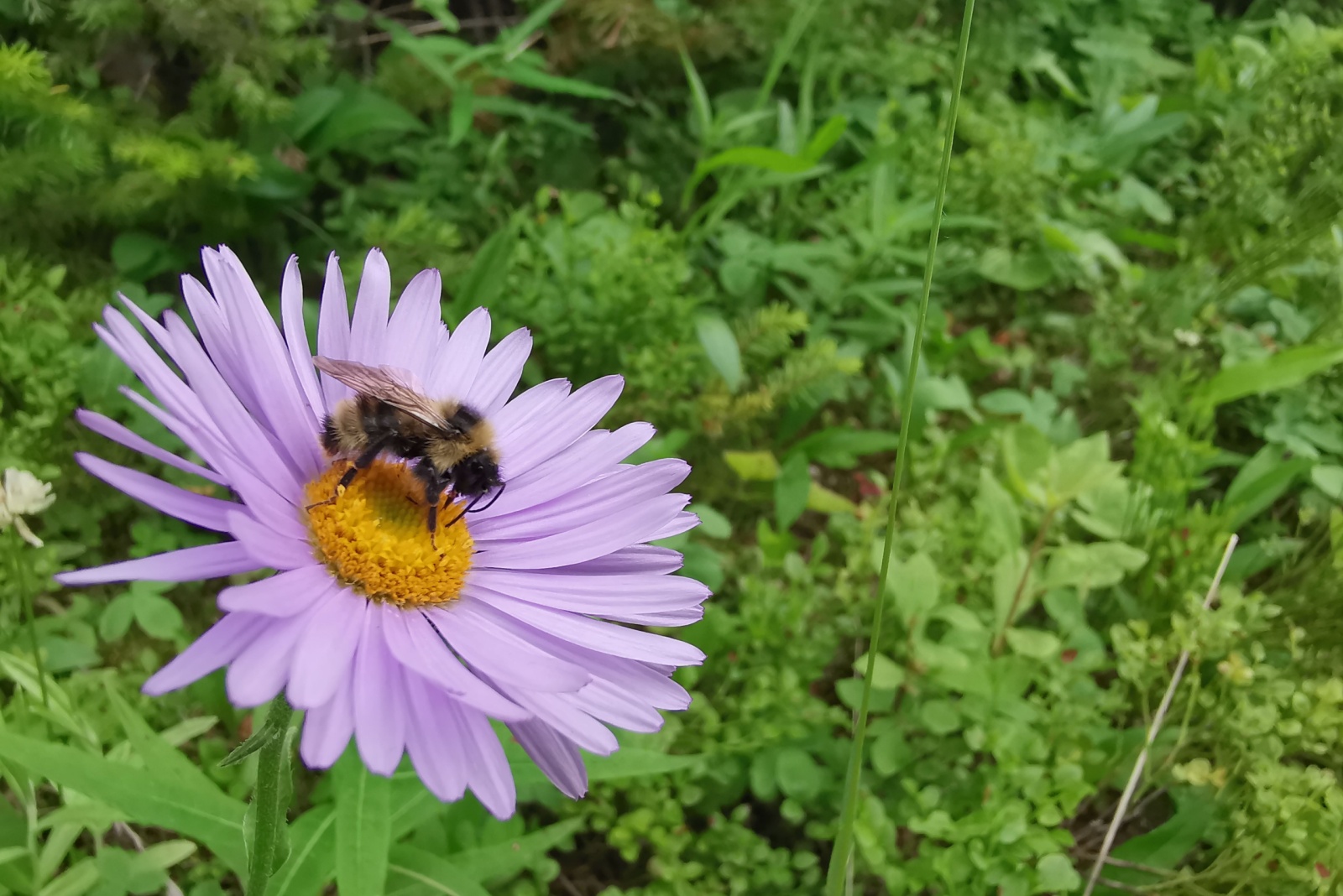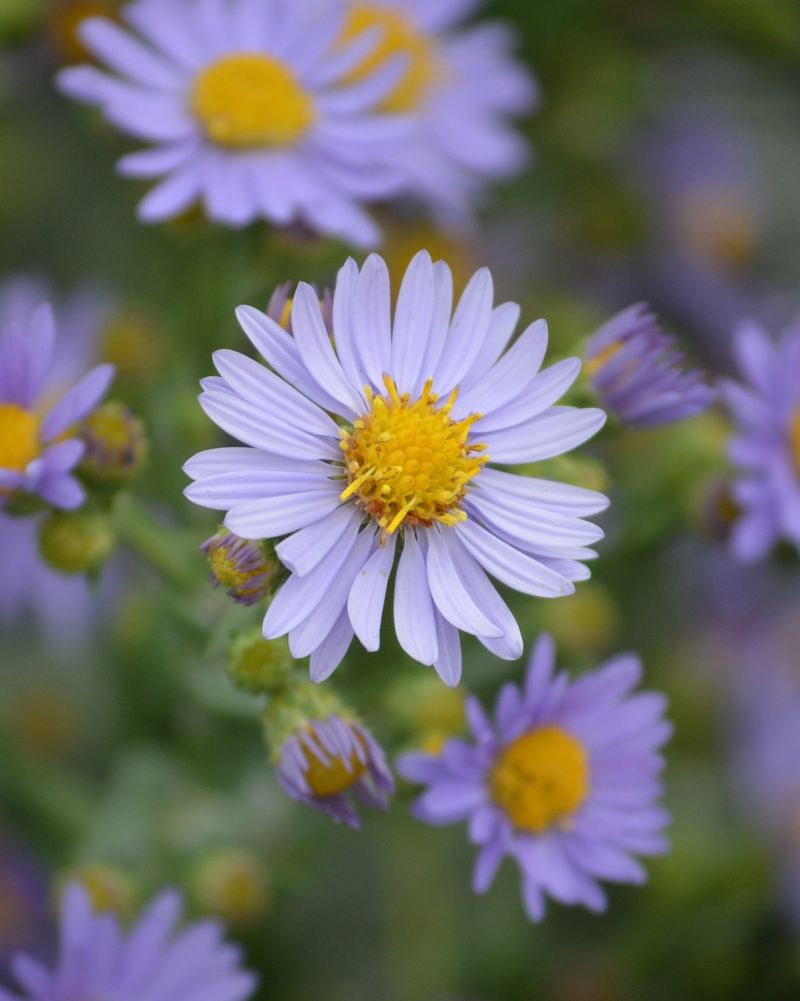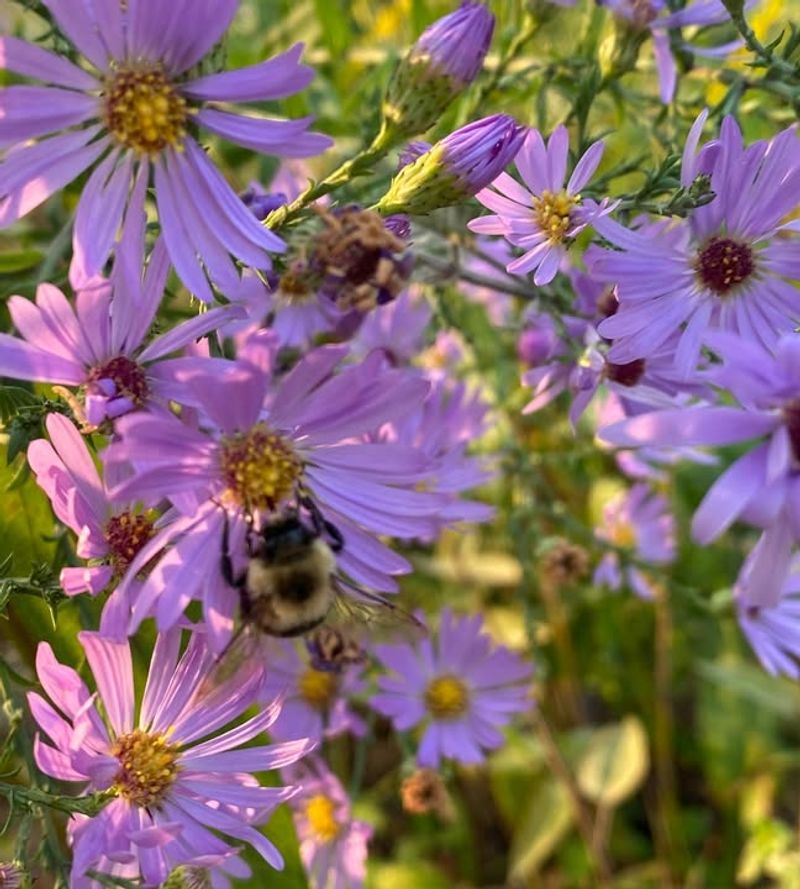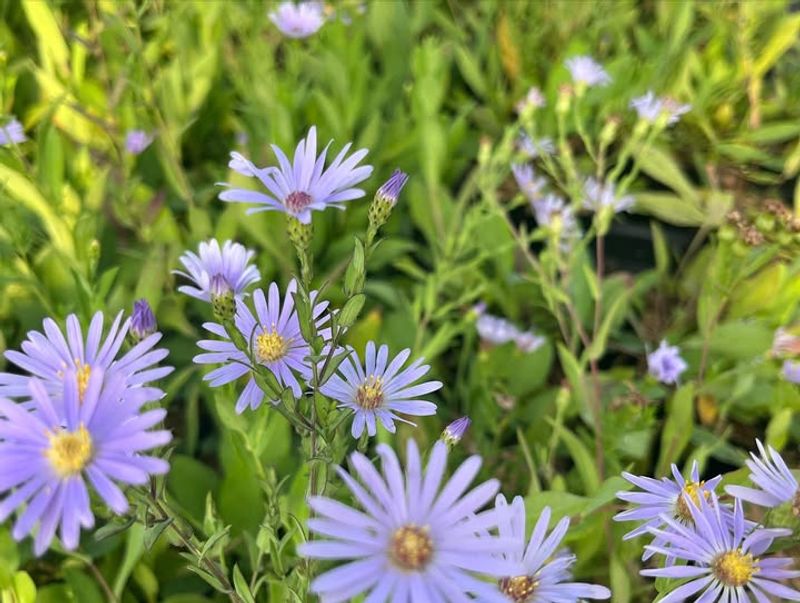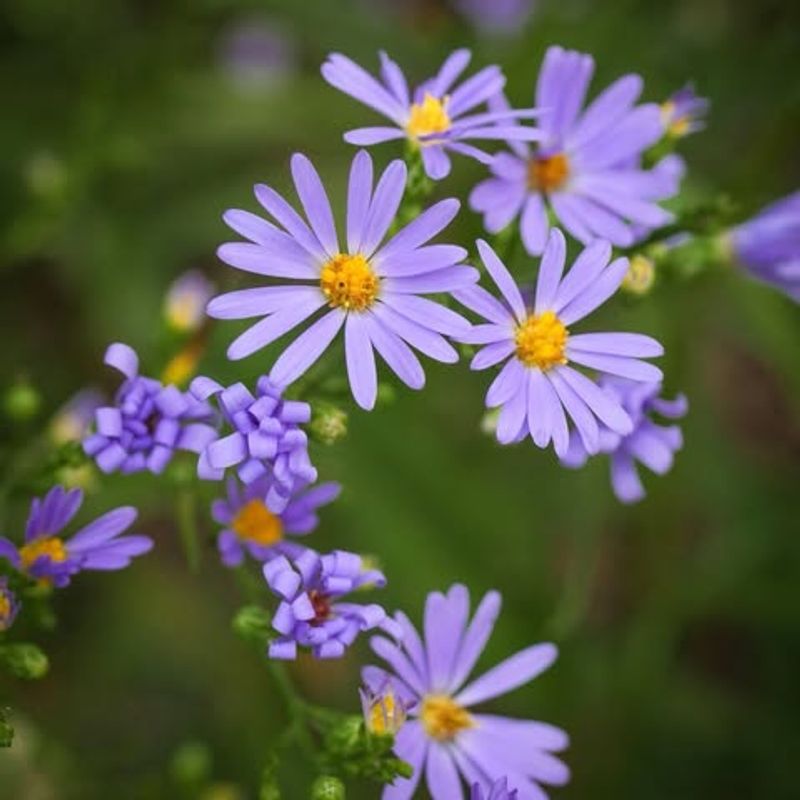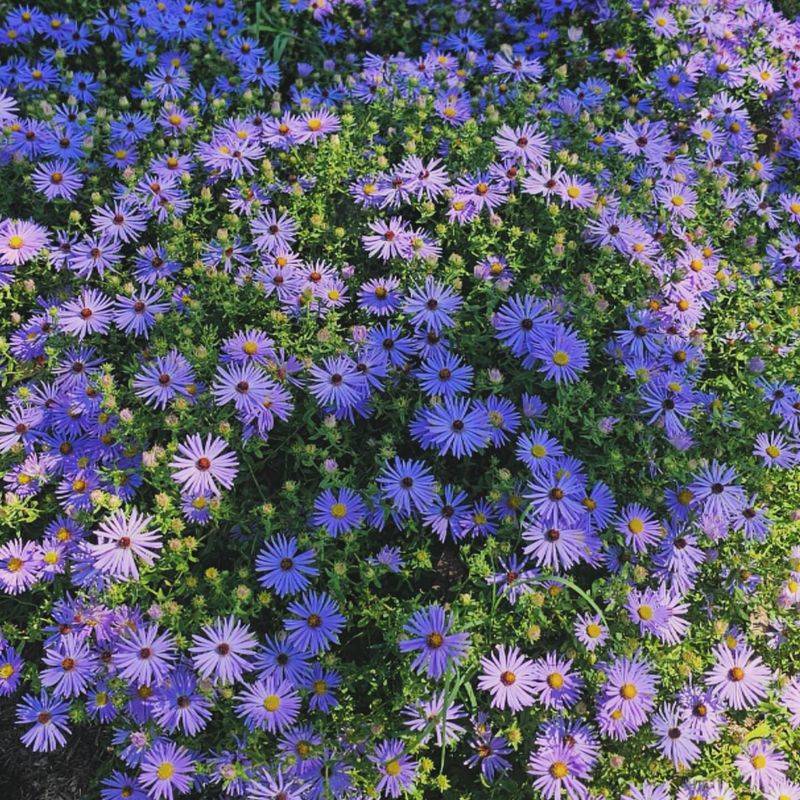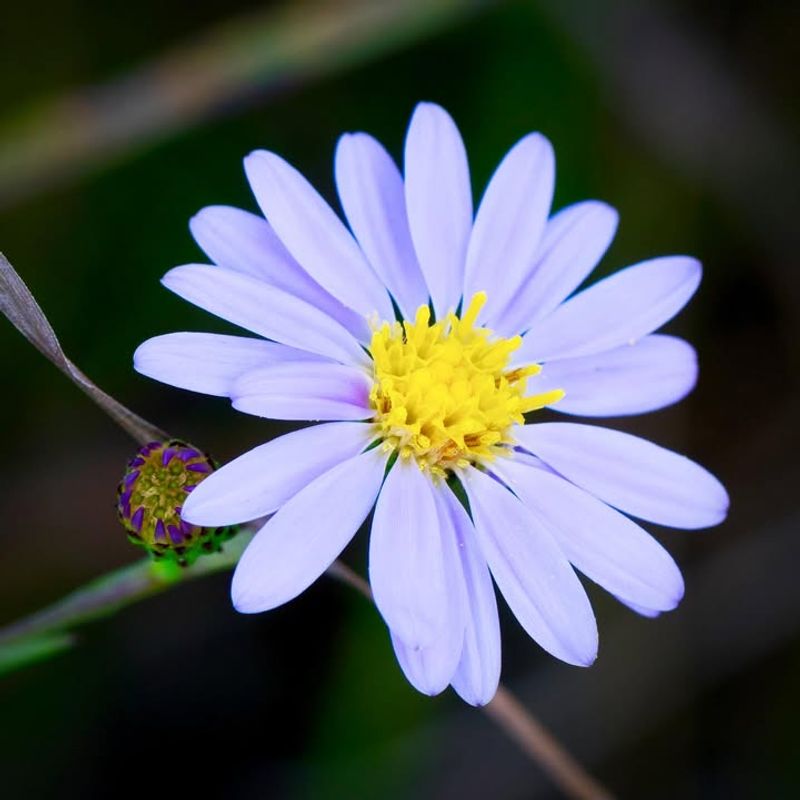Missouri’s fall landscape gets a real shot in the arm when a certain native plant steps into the spotlight. Smooth blue aster turns heads with its cool-toned blooms, drawing bees as if it rolled out a red carpet just for them.
When other flowers start calling it quits, this hardy standout keeps the nectar flowing and the garden humming. Its late-season surge offers pollinators a lifeline and gives yards a burst of color that refuses to fade quietly.
1. Late-Season Blooming Champion
While most wildflowers finish blooming by late summer, smooth blue aster waits until fall to put on its show. Starting in September and continuing through October, these plants burst into color when bees need food most.
Honeybees and native bees depend on this late-season nectar to build up energy reserves before cold weather arrives. Without plants like smooth blue aster, many bee colonies would struggle to survive winter.
Planting this native flower in your garden creates a vital feeding station during a critical time.
2. Native To Missouri Soil
Smooth blue aster has called Missouri home for thousands of years, making it perfectly adapted to local conditions. Unlike imported plants that demand special care, this native species thrives in Missouri’s clay soil and weather patterns.
Because it evolved alongside local bees, the plant and pollinators have a special relationship that benefits both. Native plants typically require less water, fewer pesticides, and minimal fertilizer compared to non-native varieties.
Growing smooth blue aster means working with nature instead of against it.
3. Purple-Blue Flowers Bees Love
Each smooth blue aster flower looks like a tiny purple-blue daisy with a bright yellow center that acts like a landing pad for bees. Scientific studies show that bees can see purple and blue colors better than other shades, making these flowers especially attractive.
A single plant produces dozens of flower clusters, offering multiple feeding spots at once. The yellow center contains both nectar and pollen, giving bees a complete meal in one stop.
Watching bees work these flowers is like seeing nature’s perfect partnership in action.
4. Grows In Sunny Spots
Smooth blue aster performs best when planted where it receives at least six hours of direct sunlight daily. Full sun locations produce the most flowers, which means more food for visiting bees throughout the fall season.
These plants can tolerate some shade but won’t bloom as heavily. Sunny spots also help keep the foliage dry, reducing disease problems that sometimes affect asters in damp, shaded areas.
Choose the brightest location in your yard for maximum bee-attracting power and spectacular floral displays.
5. Handles Drought Like A Pro
Once established, smooth blue aster tolerates Missouri’s occasional droughts without extra watering. Deep roots reach down to find moisture that shallow-rooted plants miss, allowing it to stay green when other flowers wilt.
This drought tolerance makes it perfect for busy gardeners who can’t water constantly. It also means bees have a reliable food source even during dry fall seasons when water becomes scarce.
After the first year, you can practically forget about watering and let nature take care of business.
6. Reaches Two To Three Feet Tall
Smooth blue aster grows to a manageable height of two to three feet, making it perfect for middle-of-the-border plantings. Unlike some native plants that tower over everything else, this species stays at a comfortable size that works in most gardens.
The medium height allows bees to easily access flowers without struggling through tall vegetation. It also provides a beautiful backdrop for shorter plants while not blocking the view of taller companions.
This Goldilocks height makes smooth blue aster just right for mixed plantings and pollinator gardens.
7. Low Maintenance And Easy To Grow
Gardeners love smooth blue aster because it practically takes care of itself once planted. No special fertilizers, constant pruning, or fussy treatments are needed to keep it healthy and blooming year after year.
The plant naturally resists most common pests and diseases that plague garden flowers. Simply plant it in spring, water occasionally during the first season, and then step back to watch it thrive.
Even beginning gardeners find success with this forgiving native plant that rewards minimal effort with maximum bee-attracting beauty each fall.
8. Supports Butterfly Migration Too
Beyond helping bees, smooth blue aster provides crucial fuel for migrating monarch butterflies passing through Missouri each autumn. These traveling insects need energy-rich nectar to complete their incredible journey to Mexico for winter.
Other butterfly species also stop by for a meal, creating a colorful parade of winged visitors throughout September and October. Planting smooth blue aster means supporting multiple pollinator species with one simple garden addition.
Your yard becomes a rest stop on one of nature’s most amazing migration routes each fall season.

